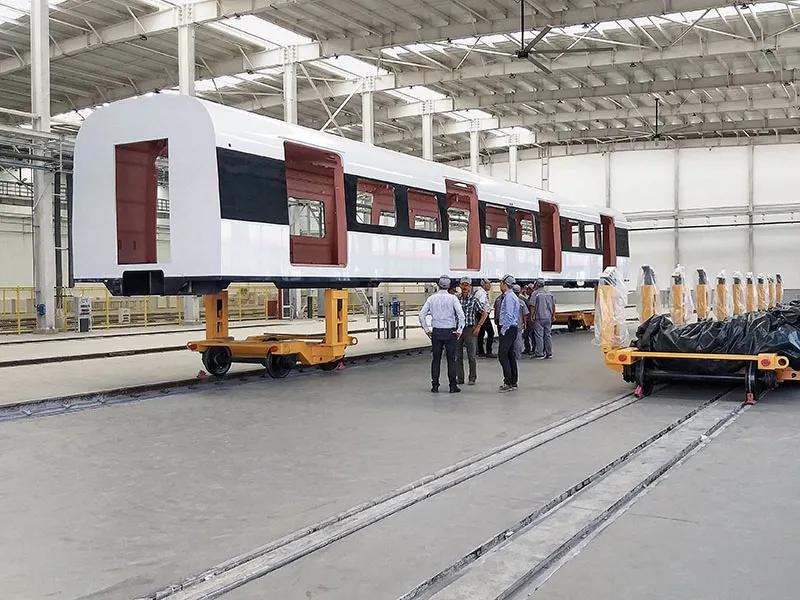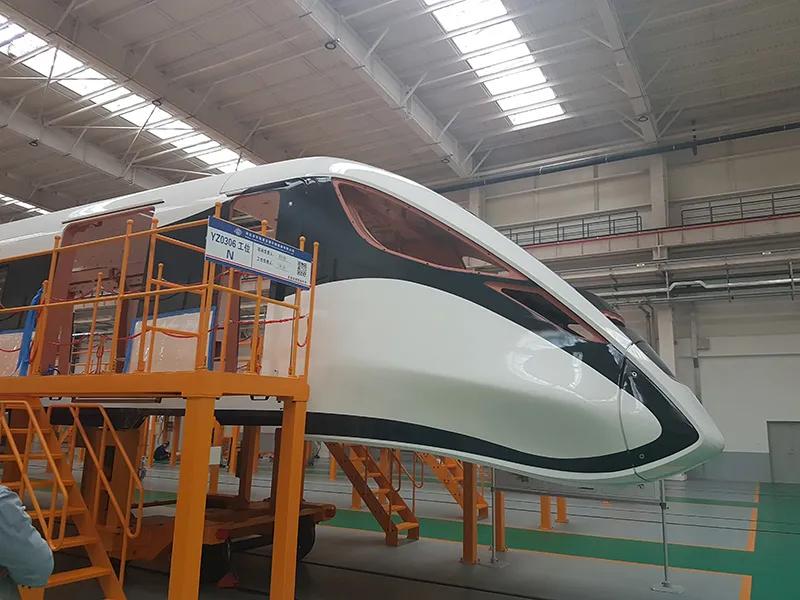HÖRMANN Vehicle Engineering provides complete vehicle development service for train in Beijing
The Chinese government is aiming to use rail-based public transport to help its burgeoning middle classes to travel within and between the country’s major cities. Advancing the railway industry is a high priority, and expertise in the development of vehicles has progressed rapidly to world-leading status in recent decades.
Unlike with urban and high-speed transport, there are still few vehicles developed within the country for connecting the suburbs to the city centres. That was why RTTE (Beijing Rail Transit Technology Equipment Group Co., Ltd), a rolling stock and system supplier located in the Chinese capital and also a subsidiary of the world’s largest urban rail company, commissioned HÖRMANN Vehicle Engineering to provide complete vehicle development services for an innovative eight-carriage vehicle 187 metres long for connecting the centre of Beijing with smaller towns in its environs. This new vehicle is intended to ease commuter traffic in the city centre and make the surrounding towns accessible for recreational visits.
HÖRMANN Vehicle Engineering developed the entire vehicle. Much of this work involved the mechanical design of the bodyshell with a complete stress analysis on the aluminium carriage body, the interior and the driver’s cab, as well as integrating the bogies. The company was also responsible for designing the electrical system architecture and integrating all the systems, such as the traction equipment, lighting, brakes, air-conditioning system and passenger information and safety systems. Finally, the company also drew up the circuit diagrams. System development was supported by a safety-focused process in accordance with the EN 50126 standard, taking into account the specifications for RAM (reliability, availability, maintainability). Throughout the term of the project, from the start of 2018 to summer 2019, a close and collaborative partnership with the development team at RTTE was a major factor in the success of the project. The work also involved HÖRMANN engineers from Chemnitz being on site to provide support while the first vehicle was being built.
The innovative dual-system vehicle can run on both direct current on the inner-city rail network and alternating current on the national network. ‘Complying with the requirements of the very different systems was just one of the challenges that we handled successfully,’ said managing director Frank Salzwedel.
HÖRMANN Vehicle Engineering also entirely fulfilled the specifications for maximum axle load despite the additional system components as well as those for size limits owing to the train’s intended use in underground rail tunnels.


